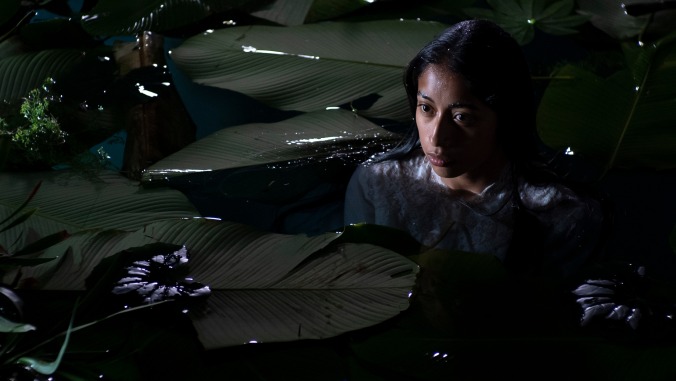Slow-burn chiller La Llorona offers a more intelligent take on the spooky myth


The Latin American myth of La Llorona, a ghostly woman in white who wanders the earth searching for living children to replace her dead ones, can be read as a morality tale. As the story goes, La Llorona was once a living woman who murdered her own offspring as revenge against the lover who abandoned them. Or she killed them when her missing husband returned to their village, ashamed to have borne children out of wedlock in his absence. (As with all folktales, there are variations.) But underneath the Catholic moralizing about extramarital sex, there’s a deeper wound: the sexual slavery of Indigenous women that’s been going on since the Spanish first invaded Mesoamerican lands. Another interpretation of La Llorona ties her to this violence, framing her as an Indigenous woman betrayed by a conquistador and transforming a figure of evil into a supernatural avenger of historical wrongs.
Offering a more intelligent spin on the legend than last year’s schlocky The Curse Of La Llorona, Jayro Bustamante’s La Llorona adheres very much to the last of those interpretations. Specifically, the director applies it to the genocide of Ixil Mayan people in Guatemala between 1981 and 1983. And although the film lays out a few basic facts in courtroom exposition scenes—according to a news report in the film, one-third of Ixil people were killed, 38% of them children under the age of 12—La Llorona does benefit from possessing a bit of foreknowledge. Bustamante provides enough context to this slow-burn ghost story that the point translates even if you go in unknowing. But the more you know about the politics, culture, and history of the region, the richer the viewing experience becomes—and the earlier you can see where it’s going.
La Llorona revolves around a retired general, Enrique Monteverde (Julio Diaz), presumably a fictionalized version of former Guatemalan dictator Efraín Ríos Montt. As the story begins, Monteverde and his family, including his bitter, elitist wife, Carmen (Margarita Kenéfic), physician daughter Natalia (Sabrina de la Hoz), and Natalia’s preteen daughter, Sara (Ayla-Elea Hurtado), are preparing to sit in court and listen to the testimony of Ixil people who survived the ethnic cleansing that happened under Monteverde’s rule. Monteverde is convicted of genocide, but another court soon overturns the judge’s decision. So he and his family spend the remainder of the film hiding in their massive mansion, continually reminded of the general’s atrocities by crowds of protestors who chant and sing and toss pictures of missing Indigenous people over the walls of their estate.
Into this environment walks Alma (María Mercedes Coroy), a Maya woman with long black hair and an intense gaze who claims to be from the same village as Monteverde’s longtime housekeeper, Valeriana (María Telón). Desperate for help, Valeriana welcomes Alma, who also bonds with the precocious Sara. But the new maid also stirs up old conflicts about Monteverde’s “appetite” for sexually abusing Indigenous women—as well as an inexplicable plague of frogs, phantom flooding, and the sound of a woman crying that only the disgraced general can hear. Thus, Bustamante layers elements of class, race, and gender conflict on top of creeping horror atmosphere, which builds from faint whispering over the opening credits to the furious roar of the film’s climax.
One reason it’s important to know what La Llorona is about going in is that the film spends a significant amount of time with the Monteverde family, whose protestations of innocence and self-pitying rationalizations might inspire sympathy under different circumstances. In particular, an early scene of Monteverde stalking the house with a gun in the middle of the night searching for the weeping woman could play either as a searing statement of lingering guilt or as a standard haunted-house scare scene. Similarly, once the film retreats behind closed doors, its pacing slows to a crawl, as Bustamante delves into inter-familial dynamics that are interesting but ultimately a distraction from a more satisfying tale of supernatural revenge.
Bustamante’s visual style also rewards patience, using long, unbroken shots that view the events on screen with a detached calm. Some of these images are powerful, like the gradual push out from the face of a Ixil woman, her expression concealed behind floral lace and traditional Maya textiles, as she testifies before a packed courtroom. When La Llorona switches to pure horror mode, however, the technique can be counterproductive; thankfully, dreams, hallucinations, and even a hand-held shot or two also enter the picture around this time. La Llorona’s audaciousness isn’t in its gore, nor in the extremity of its subject matter. What stands out about the film is the pain that lies underneath Bustamante’s placid compositions—an anguished desire for justice that, like the Weeping Woman herself, still cries out to be heard.